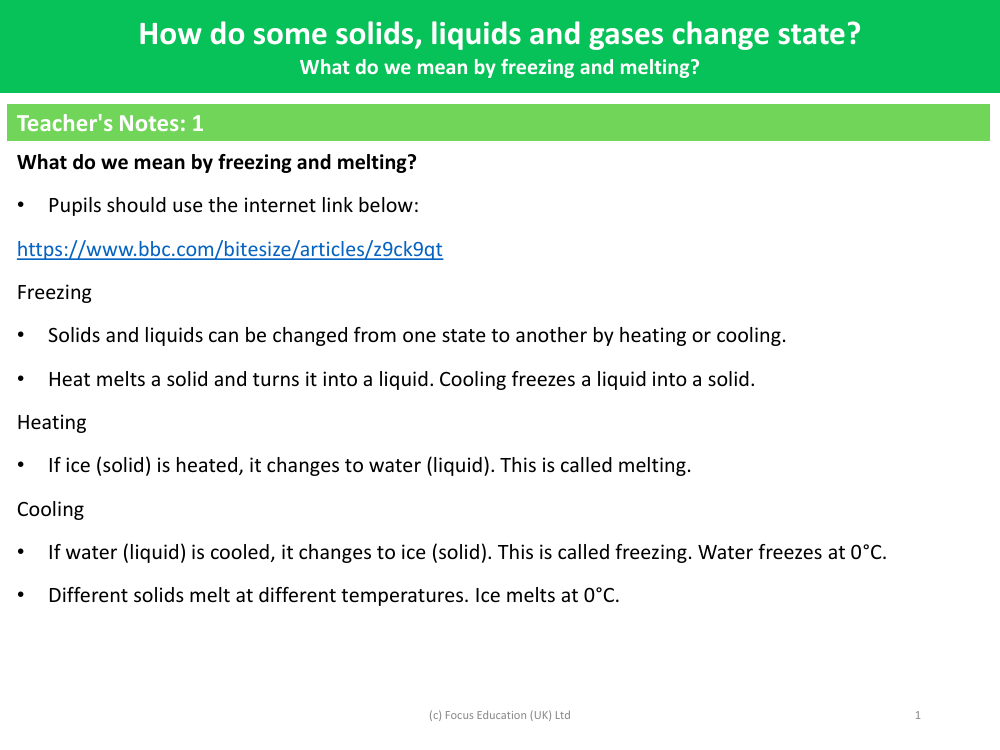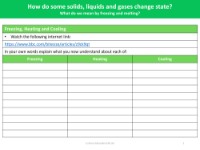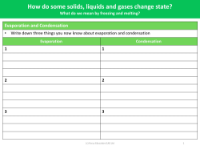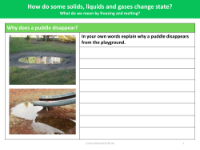What do we mean by freezing and melting? - Teacher's Notes

Science Resource Description
Freezing and melting are two essential processes that describe the transformation between the states of matter, specifically between solids and liquids. Freezing occurs when a liquid is cooled down and turns into a solid. This process happens at specific temperatures for different substances; for example, water freezes and becomes ice at 0°C. Conversely, melting is the process where a solid is heated and changes into a liquid. Ice, when heated, melts back into water, also at 0°C. These temperature-dependent state changes are fundamental concepts in understanding how materials behave under different thermal conditions.
Beyond freezing and melting, the processes of evaporation and condensation are also crucial in the study of how solids, liquids, and gases change state. Evaporation involves a liquid turning into a gas, while condensation is the process where a gas cools down and becomes a liquid. These processes are closely related to the concept of humidity, which is a measure of the amount of water vapour present in the air. Understanding these processes helps explain everyday phenomena, such as why puddles on the playground gradually disappear. By exploring these concepts through various educational resources, pupils can deepen their comprehension of the dynamic nature of matter.





